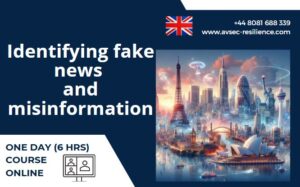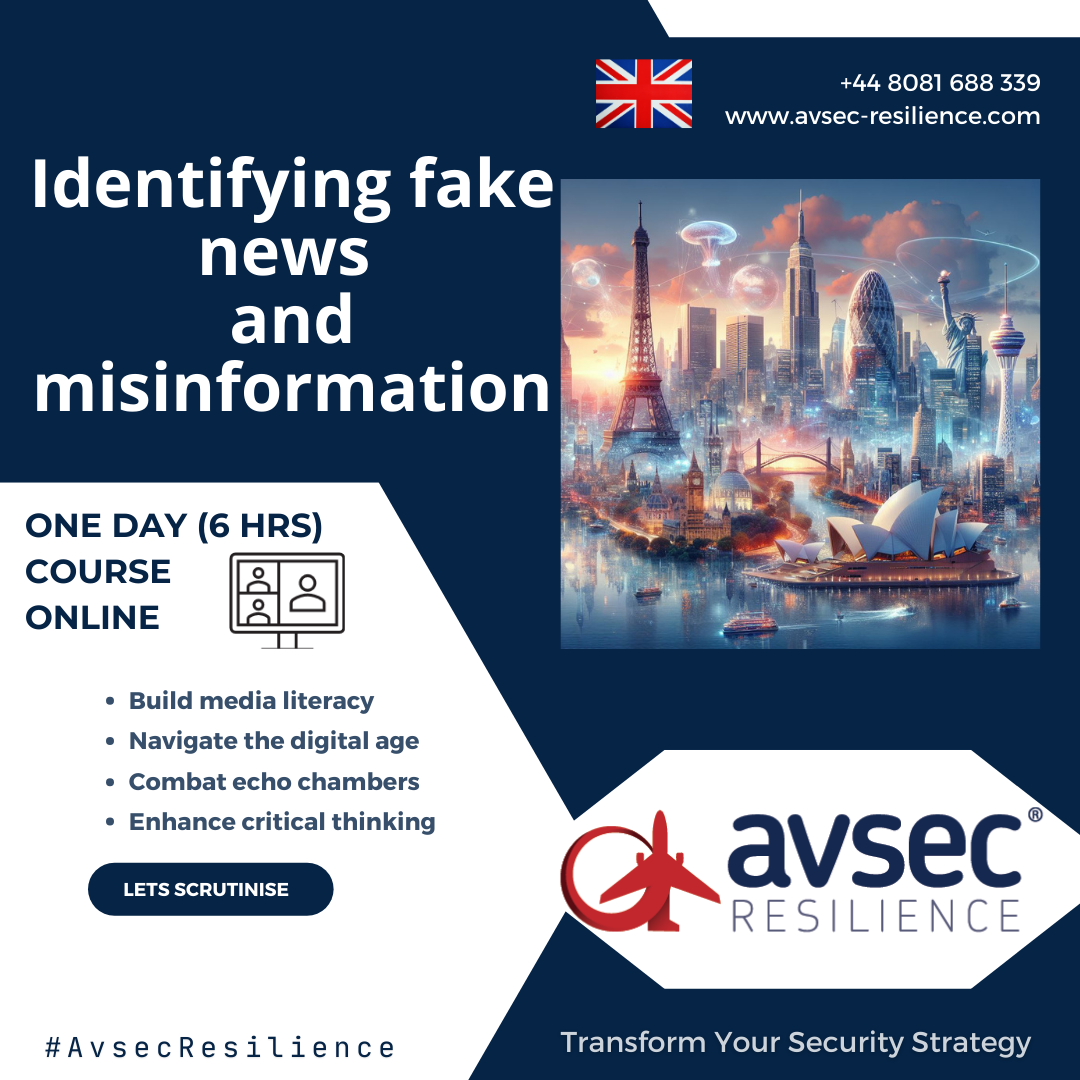Design & Developed by Themeshopy
Return To TopIdentifying fake news and misinformation
Identifying fake news and misinformation

Duration: 1 days / 6 hours
Delivery method: Online/ In-company training
Target Audience: This course is designed for security professionals who play a role in analysing open source information.
Cost: Available upon application
Language: English
Course code: IFN-1
Introduction
In a world overflowing with information, how can you tell what’s true and what’s misleading? Fake news spreads faster than ever, influencing opinions, shaping narratives, and even impacting real-world events. But you don’t have to fall for it!
“Spotting Deception” is your essential guide to navigating the digital landscape with confidence. This course equips you with the critical thinking skills and fact-checking techniques needed to identify, analyze, and challenge misinformation—whether it appears on social media, in the news, or through viral trends.
What you will learn
- The psychology behind why fake news spreads
- Common techniques used to manipulate information
- How to fact-check sources and verify credibility
- Strategies to protect yourself and others from misinformation
- Real-world case studies and hands-on practice
Potential course benefits, the why
In today’s digital world, misinformation is everywhere—on social media, in the news, and even in conversations with friends and family. Taking “Spotting Deception: A Practical Guide to Identifying Fake News” will empower you with essential skills to think critically, verify facts, and make informed decisions.
Here’s why this course is important:
The “Identifying Fake News and Misinformation” course is crucial because it teaches critical thinking, sharpens media literacy, and helps individuals separate fact from fiction. In today’s digital world, these skills protect decision-making, trust, and informed participation in society.
Types of fake news
In-house courses
Zoom is a default setting for this course, it could be delivered via Microsoft Teams or Webex.
The above course can be modified to better fit, the appetite of your organisation
Jump to internal page: Contact us
Continue looking;
Page: Spotting Deception: Identifying fake news and misinformation
Avsec Resilience ®
Capacity Transformation Series
🔝 Back to the top 🔝













